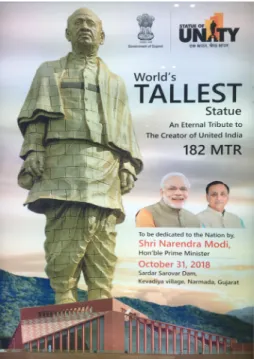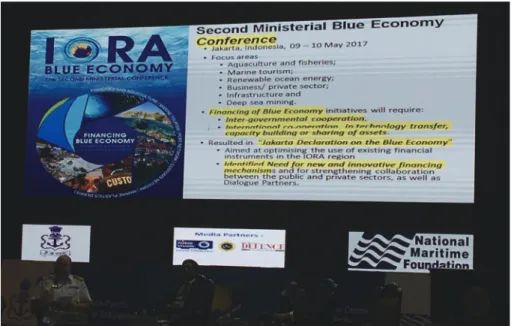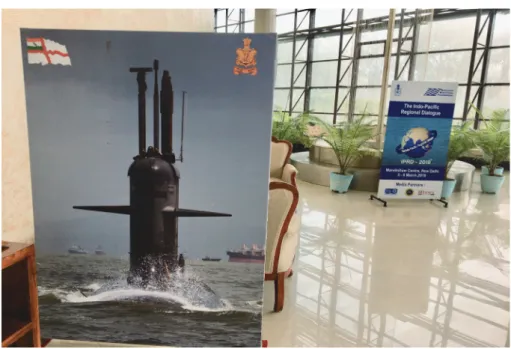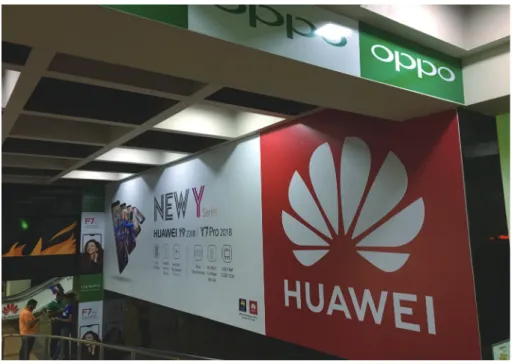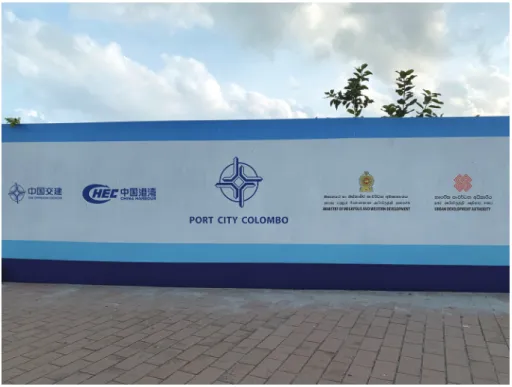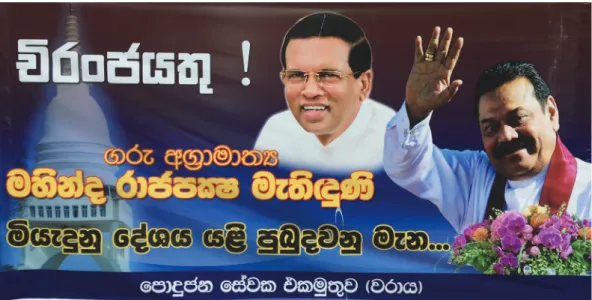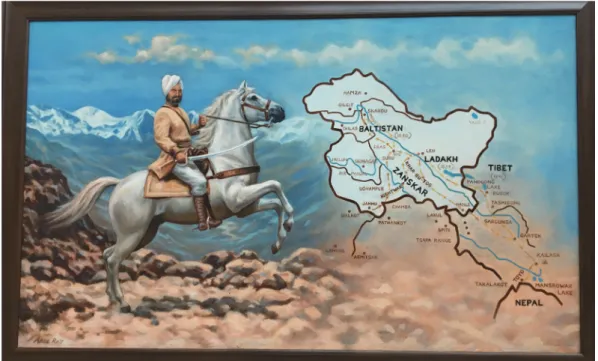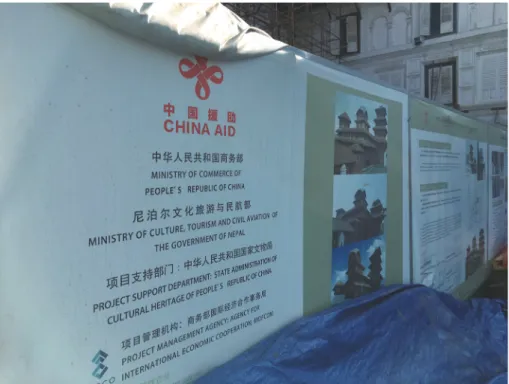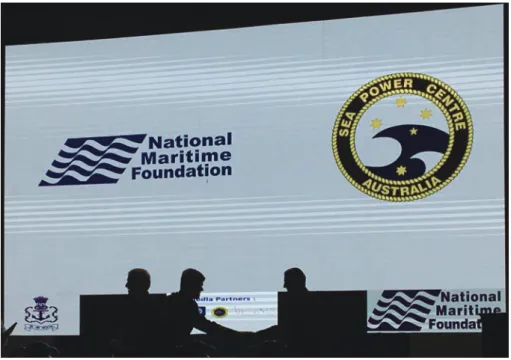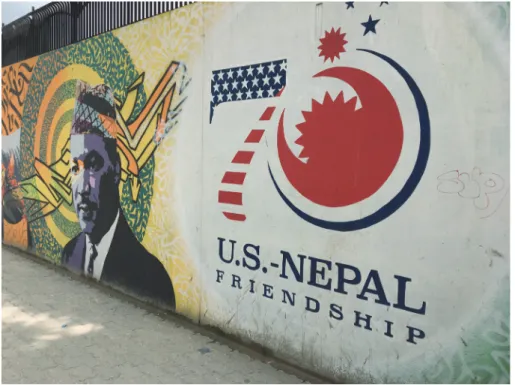When Modi’s “Indo-Pacific Concept” Meets
Trump’s “Indo-Pacific Strategy”: Possibilities
for Further Convergence and Implications
for Taiwan
Roger C. Liu
Associate Professor and Chair, Centre for South and Southeast Asia Studies, FLAME University, IndiaAbstract
With the historic victory won in the Lok Sabha by the Bharatiya Janata Party (BJP), Narendra Modi begins his second term as Prime Minister of India. New Delhi will continue its participation in Indo-Pacific affairs with enhanced multilateral or multiple bilateral collaboration under its “Indo-Pacific Concept (IPC).” An important purpose is to offset the influence of China by introducing more players into the region, but doing so might risk attenuating the relationship with the US, especially when Russia and Iran are brought into the game. Nevertheless, there exists great potential for New Delhi and Washington to collaborate under the banner of Indo-Pacific when the US enhances the economic part of its Indo-Pacific Strategy (IPS) by focusing more on trade, investment, and infrastructure, with which India can connect and relate its development strategy. For Taiwan, the prospective convergence of the Indian IPC and the US IPS can bring opportunities, but the possible pendulum change in Indo-Chinese relations also deserves considerable attention.
Keywords: Indo-Pacific, 2019 Lok Sabha Election, Narendra Modi, Indian Foreign
Policy, Bharatiya Janata Party
The ruling Bharatiya Janata Party won by a landslide in the 17thGeneral Election on May 23, 2019. Unlike most analysis predicted, instead of being dragged by the fear of a slowing-down economy, BJP won 303 out of 543 contested seats in the Lok Sabha (the lower house of Indian Parliament), a 21-seat gain compared with 282 seats
in the 2014 Election. The strength of the ruling coalition, the National Democratic Alliance (NDA), dominated by BJP, grew from 336 seats in 2014 to 358 seats in 2019. The victory is unprecedented in the history of BJP, as it has won with a clear majority in two consecutive elections, becoming the first party to do so since the Indian National Congress (INC) won consecutively in the 1980 and 1984 general elections. BJP widened its margin of victory by 16%, the highest in 30 years, with a nationwide vote share increase across the rural-urban divide; within groups of different income levels; from lower caste voters; and in traditionally non-BJP states, such as West Bengal and the Northeast states.1
No single factor can explain the overwhelming victory of BJP in 2019. The patriotic sentiment instigated by a series of bombing attacks on Indian armed forces and the following air and ground border conflicts with Pakistan in Jammu and Kashmir (J&K) beginning in February 2019 may serve as the immediate factor in the background. The Hindu nationalist agenda, with national policies focusing on development and economic growth, equal use of identity and caste politics, and a wide and micro-targeted social media and Internet campaign for the election also contributed to the BJP victory. The most important factor, however, might be that BJP has impressed the voters by successfully delivering and fulfilling essential items on its election mani-festo.
“Ten Charts that Explain the 2019 Lok Sabha Verdict,” Livemint, May 24, 2019, <https://www. livemint.com/elections/lok-sabha-elections/ten-charts-that-explain-the-2019-lok-sabha-ver-dict-1558636775444.html>.
Figure 1. The Campaign Posters of Bharatiya Janata Party
Source: Photograph by the author.
Note: By applying astute campaign techniques and promoting the development-centered and Hindu nationalist agenda, the Bharatiya Janata Party won a historic victory in the 2019 Lok Sabha Election under the leadership of Narendra Modi and Amit Shah (second from left of the upper row).
Figure 2. Sardar Vallabhbhai Patel’s Statue
Source: Photograph by the author.
Note: The ruling BJP advocates a united India under Hindu nationalism. One symbolic gesture is the erection of a statue for the first Home Minister of Independent India, Sardar Vallabhbhai Patel, in Gujarat, where Modi was the Chief Minister.
Under the leadership of Narendra Modi and the head of the party machine, Amit Shah, BJP came back with a stronger mandate. How would the more powerful BJP government of India, with a list of election agenda to fulfill, incorporate itself in the Indo-Pacific area with other powers – the US, Japan, Australia, China, and Russia – interested in this region in the context of the Act East Policy created in 1992 as the “Look East Policy” elevated by Modi in 2014?
I. When the Indian Indo-Pacific Concept meets the US Indo-Pacific Strategy
India’s “Indo-Pacific Concept” is an underdefined but open concept. First coined by Captain Gurpreet Khurana of the Indian Navy in 2007, the term “Indo-Pacific” first refers the geographic area combining the Indian Ocean Region (IOR) and the Western Pacific Region, which also covers East Asia and Southeast Asia.2Khurana’s concept later was adopted by the Indian Navy and used in the Ensuring Secure Seas:
Indian Maritime Security Strategy (2015). In the earlier Indian Maritime Doctrine
(2009), there was not yet any reference to Indo-Pacific.
Beginning with emphases on the military and security, the economic aspect of Indo-Pacific also has been added with Modi’s announcement of SAGAR,3or “Security and Growth for All in the Region,” in 2015 on his visits to the Seychelles, Mauritius, and Sri Lanka. Although not specifically mentioning Indo-Pacific, SAGAR can be viewed as an essential part of IPC by the BJP government. It not only indicates the areas (security/military and growth/economics) but also lays down the methods of ac-complishing it: “collective action and cooperation.”4 The security part has been manifest with the strengthened bilateral or multilateral military exercises or diplomacy with the IOR countries, while the growth part is supported by concepts and projects, such as Ocean/Blue Economy; the Project Mausam, with a cultural and historical focus; and the Sagar Mala Project, which commits India to enhance port connectivity
Gurpreet S. Khurana, “The ‘Indo-Pacific’ Concept: Retrospect and Prospect,” November 14, 2017, Center for International Maritime Security, <http://cimsec.org/indo-pacific-concept-retrospect-prospect/34710>.
Sagar ( ) in Hindi also means “ocean.”
G. Padmaja, “Modi’s Maritime Diplomacy: A Strategic Opportunity,” Maritime Affairs: Journal
along with port modernization and port-linked industrialization with minimal infrastructure investment.
Figure 3. The Second Ministerial Blue Economy Conference
Source: Photograph by the author.
Note: The economic arm of SAGAR is the “Blue Economy.” Economy and development are potential areas of collaboration for New Delhi and Washington in the Indo-Pacific context.
Multilateralism is (and has always been) the keyword in the Indo-Pacific concept of India, which is manifest by Modi’s reference that “India does not see the Indo-Pacific Region as a strategy or as a club of limited members” in the Shangri La Dialogue in June 2018,5 after the White House and the US Department of Defense released their documents as part of the Indo-Pacific Strategy. Previously, after the reboot of the Quad in 2017, India responded that it recognizes that “a free, open, prosperous and inclusive Indo-Pacific region serves the long-term interests of all countries” as India “highlighted India’s Act East Policy as the cornerstone of its engagement in the Indo-Pacific region.”6
“Prime Minister’s Keynote Address at Shangri La Dialogue (June 01, 2018),” June 1, 2018,
Ministry of External Affairs Website, <https://www.mea.gov.in/Speeches-Statements.htm?
dtl/29943/Prime+Ministers+Keynote+Address+at+Shangri+La+Dialogue+June+01+2018>. “India-Australia-Japan-U.S. Consultations on Indo-Pacific (November 12, 2017),” November
The emphasis of the American IPS originally was on military and security aspects when first announced, as it designates India as a “Major Defense Partner of the US.” In the realist national strategic planning of Trump, the US expects its allies and partners to share more burdens as active security providers. Nevertheless, the dialogue between Trump and Modi regarding what India has been contributing in Afghanistan highlights the difference in the modus operandi of great power politics. When Modi talked about “soft power” measures, such as building libraries in Afghanistan, Trump has expected India to commit more military forces to the post-withdrawal situation.7A similar scenario appeared in South China Sea (SCS) as well. When the US Navy requested its Indian counterpart to conduct escort missions together in SCS, the Indian Navy refused because it might provoke China.8
It is natural to argue that the lukewarm response of India regarding IPS shown by the resistance to a seemingly closer security collaboration is a function of its decades-long “strategic autonomy” principle that pursues a “US-free” foreign policy. Nevertheless, since the Bush Administration began to approach India in 2001, Washington and New Delhi have become much closer in various aspects of the bilateral relationship. Since Modi resumed office in 2014, the US-India collaboration in security and political affairs has accelerated. Barack Obama was the first US President since 1950 invited to the annual Republic Day Parade as the Chief Guest. US weapons exports to Indian armed forces include P-8I Anti-submarine/surface aircraft (to monitor activities of China’s Navy in IOR) and AH-64E Apache attack helicopters (to counter terrorism in Jammu and Kashmir and in the border area near Pakistan). The two countries also have explored the possibility of renovating and building India’s aircraft carrier fleet together, as key defense agreements, such as the Logistics Exchange Memorandum of Agreement (LEMOA) and Communications Compatibility and
12, 2017, Ministry of External Affairs Website, <https://mea.gov.in/press-releases.htm?dtl/29110/ IndiaAustraliaJapanUS_Consultations_on_IndoPacific_November_12_2017>.
“Donald Trump Takes Dig at PM Modi for Funding ‘Library’ in Strife-torn Afghanistan,” The
Economic Times, January 3, 2019, <https://economictimes.indiatimes.com/news/international/
world-news/donald-trump-mocks-pm-narendra-modi-for-library-in-afghanistan/articleshow/67358516. cms>.
Anjana Pasricha, “India Rejects Joint Naval Patrols with US in South China Sea,” VOA, March 11, 2016, <https://www.voanews.com/a/india-rejects-joint-naval-patrols-with-us-in-south-china-sea/3231567.html>.
Security Agreement (COMCASA) were signed in Modi’s first term of government.
Figure 4. The “Indo-Pacific Regional Dialogue” Hosted by the Indian Navy
Source: Photograph by the author.
Note: In recent decades, the Indian Navy has stepped up collaboration with its counterparts in different countries as a response to the increased Chinese presence in Indian Ocean Region.
The era of “strategic autonomy” has ended with the US, as Indian foreign policy has begun to follow the principles of “strategic alignment”9or “multilevel alignments”10 in the Modi era, which is characterized by engagement “with diverse set of actors with a diversity of interests,” as the different countries that India engages would have conflicting interests with one another. Following this logic, buying Russian weapons, such as S-400 surface-to-air missiles, does not contradict the closer security collaboration with the US for India, although it might not be seen as such from the US perspective.
II. A Broader Indo-Pacific Incorporating Security, Diplomacy and Economy
As a response to China’s ascendancy, the US Indo-Pacific Strategy has prompted
Harsh V. Pant, “The Modi Factor in India Foreign Policy,” March 8, 2019, ORF, <https://www. orfonline.org/research/modi-factor-indian-foreign-policy/>.
different versions of “Indo-Pacific Concepts (IPCs)” to develop and enrich in multiple countries, including the US itself. The IPCs should at least comprise three dimensions. – The “Security, Military, and Strategy” dimension: the “hard-politics” aspect, involving alliance or pseudo-alliance relations, where two or more parties have solid defense collaboration in weapons acquisition, R&D, defense technology transfer, military cooperation and coordination, and/or mutual military exercises.
– The “Diplomacy and Politics” dimension: bonhomie and well-coordinated diplomatic cooperation in the general direction of collective actions and directions regarding strategies, plans, and projects in the Indo-Pacific framework, as well as synchronization on major diplomatic stances.
– The “Economic and Connectivity” dimension: collaboration in the “soft-politics” category, including trade, investment, and collaborated projects in infrastructure in the Indo-Pacific region.
Figure 5. A Billboard of Huawei and Advertisement for Oppo in Colombo, Sri Lanka
Source: Photograph by the author.
Note: Chinese-made cellular phones, as well as other ICT products, have dominated the South Asian market in recent years.
So far, considerable attention has been paid to the military aspect of the Indo-Pacific Strategy. This may have been true when the IPS was first created based upon the National Security Strategy (December 2017 by the White House) and National
Defense Strategy (under former Secretary of Defense James Mattis). Nevertheless,
there is an economic aspect that IPS has incorporated. On July 30, 2018, Michael Pompeo, the US Secretary of State, announced the Better Utilization of Investment
Leading to Development Act, or BUILD Act, which has $60-billion-plus financial
capacity to be authorized to the US government for use on developmental or entrepreneurial projects in the Indo-Pacific region. The BUILD Act was passed by the Senate on October 5, 2018, and a new organization, the US International Development Finance Corporation (DFC), was created. By combining the Overseas Private Investment Corporation (OPIC) and USAID’s Development Credit Authority, DFC will become the major organ for the US to fund and support developmental projects.11
With the passing of the BUILD Act, the US addresses the missing economic aspect of IPS with areas like trade, investment, and infrastructure. Along with the BUILD Act, Pompeo laid out at the US Chamber of Commerce a multilateral mechanism integrating digital connectivity, energy, and infrastructure within the IPC framework. This will better echo and fit India’s multilateral diplomacy.12 The BUILD Act and plans and projects based on it can work better with a variety of regional multilateral arrangements that India has established, such as Bay of Bengal Initiative for Multi-Sectoral Technical and Economic Cooperation (BIMSTEC). In fact, the US now is funding the Indian Ocean Rim Association with the $113 million fund allocated under IPS.13
Another incentive for New Delhi to better coordinate within the economic component of IPS is the urgent need to counter China’s infrastructure offensive in
“A New Era in US Development Finance,” August 22, 2019, Accessed, OPIC.gov, <https:// www.opic.gov/build-act/overview>.
“Secretary Pompeo Remarks on ‘America’s Indo-Pacific Economic Vision,’” July 30, 2018,
US Embassy & Consulate in Korea,
<https://kr.usembassy.gov/073018-secretary-pompeo-remarks-on-americas-indo-pacific-economic-vision/>.
Joan Chang, “US Invested in Strategy for ‘Free and Open’ Indo-Pacific Region,” The Epoch
Times, August 21, 2018,
IOR. As Vijay Gokhale, the Foreign Secretary of India testified in the Lok Sabha in February 2018 that China’s capacity to build infrastructure in IOR is “far greater than our [India’s] capacity” and it has been “a constant concern of the government” when New Delhi attempts to “reduce the dependency on China in terms of infrastructure requirement” of its neighbors.14India might avoid being posed as a US ally confronting China militarily in the Western Pacific or other places. Nevertheless, as China is looming larger in the neighborhood, the expected presence of the US investment and support in IOR on infrastructure will be a great boost for India and would create more space for Indo-US collaboration.
Figure 6. The Controversial Port City Colombo
Source: Photograph by the author.
Note: The controversial Port City Colombo (recently renamed Colombo International Financial City), a planned special financial zone on 169-hectare land reclaimed outside Colombo Fort dominated by China Harbour Engineering Company, a subsidiary of China Communications Construction Company.
Devirupa Mitra, “India Sounds Alarm on Chinese Infra Projects in Neighbourhood,” The Wire, March 14, 2018, <https://thewire.in/diplomacy/china-making-headway-in-infra-projects-in-indias-neighbourhood-foreign-secretary-gokhale-to-panel>.
Figure 7. The Campaign Poster with Mahinda Rajapaksa
Source: Photograph by the author.
Note: Mahinda Rajapaksa (right), the former President (2005-2015) and Hambantota-based political strongman in Sri Lanka politics with wide support in rural areas, has maintained a close and cooperative relationship with China. Rajapaksa and his family are expected to make a comeback in the 2020 Presidential Election. Current president Maithripala Sirisena is next to him.
III. India: Looking West or East?
In the first years of Modi’s second term, the strategic attention and focus more likely will be on Pakistan, Afghanistan, Jammu, and Kashmir, as development will keep occupying the center of the stage in domestic politics. The priority of these goals would inevitably constrain India’s greater commitment in other parts of the Indo-Pacific region. “Combating terrorism” is the key term in BJP’s 2019 election manifesto
Sankalp Patra, as national security issues are listed as the first set of goals to finish
after elected. The term terrorism usually refers to Pakistan-sponsored attacks via supported armed groups or organizations. BJP has attempted to alter the status in Jammu and Kashmir, which both Pakistan and China declare parts of as their territory. With Article 370 and 35A in the Constitution of India abrogated in August 2019, domestic, as well as foreign investment, will be able to enter J&K. By altering the constitutional status and promoting development, the BJP government wants to deal better with terrorism plaguing the area and spilling out into other parts of India.
As expected, the “unilateral” change of J&K’s status stirred strong reactions from Pakistan. The Indo-Pakistani relationship has intensified again, as Islamabad has launched all possible diplomatic offensives and sent strong threats, including the use of nuclear weapon. The situation is complicated further by the planned withdrawal of US and NATO forces from Afghanistan for the first time since Operation Enduring
Freedom initiated in October 2001. Washington has been expecting a greater role for
India in a post-US Afghanistan, including military intervention by Delhi. Fearing that the Taliban-controlled Afghanistan will be used as a safe haven for Pakistani-sponsored mujahideen to attack India (especially in Jammu and Kashmir) after US withdraws its ground forces, the BJP government has tried to “normalize” J&K through options, including the abrogation of Articles 370 and 35A. Nevertheless, India has been reluctant to have troops put boots on Afghani soil due to the lack of willingness and capacity.
Figure 8. General Zorawar Singh, the “Conqueror of Ladakh”, and boundaries of the Indian-claimed Jammu and Kashmir
Source: Photograph by the author.
Note: By abrogating the special status given to Jammu and Kashmir in the Constitution, the BJP government wants to better deal with terrorism supported by Pakistan and the China-Pakistan Economic Corridor (CPEC) passing through the contested territory claimed by New Delhi, Islamabad, and Beijing.
Traditionally, India has had few contacts with Taliban, which has had a closer relationship with Pakistan. New Delhi long has supported the Northern Alliance instead. In such a situation, dealing with Afghan issues through multilateral ways via multi-party talks, forums, and regional international organizations, such as the Shanghai Cooperation Organization (SCO), is preferred by India. Thus, maintaining and further managing the relationships with regional key players like Russia and China is essential.
IV. China: An Important Asset Rather Than A True Partner
China also will play an important role in managing the relations with Pakistan. As a major stakeholder in the China-Pakistan Economic Corridor within the Belt and Road Initiative, Beijing would prevent all possible conflicts in the region. China has kept a low profile regarding the abrogation issue. Instead of criticizing India harshly, Beijing publicly reiterated Pakistan’s complaints and its original stance on Aksai Chin as part of the territory of China, showing a restrained attitude. Xu Qiliang, the Vice-Chairman of the Central Military Commission of China, visited Rawalpindi to meet the Pakistani Army Chief Qamar Javed Bajwa in late August, which is viewed as one of China’s attempts to stabilize the situation.
India grasped the good timing. The announcement of abrogation happened two months before the annual Modi-Xi informal meeting in Mahabalipuram, Tamil Nadu from October 11 to 13, amid a series of high-level working level meetings between the governments and ruling parties. This apparently helped de-escalate tensions with Pakistan since China stepped in for a better atmosphere before the Sino-Indian informal summit.
The post-US Afghanistan is expected to further complicate the relations in the region. China, Russia, and India cannot afford military intervention if the US and the NATO forces leave. A key stakeholder in Afghan affairs, New Delhi would continue and enhance its multilateral diplomacy. Although limited in function and efficacy, SCO still remains as the major platform since India joined as a member in July 2017. India also is a member of the SCO-Afghanistan Contact Group, and Indian officials have had several meetings with their Chinese counterparts within the framework.
especially has tried to avoid any form of bilateral cooperation. After the Modi-Xi Wuhan meeting, China proposed “China-India Plus(中印加一/ zhongyin jiayi),” a bilateral framework for Delhi and Beijing to coordinate and co-manage regional affairs in IOR. Launched as a pilot project on Afghanistan, China wished to further apply it to regional issues, such as the Rohinya crisis, and infrastructure projects in Sri Lanka and Nepal. In 2018, India and China together trained ten Afghan diplomats as the launching event of China-India Plus. With the departure of Luo Zhaohui, the Chinese ambassador to India, China-India Plus has stalled.15
The Afghanistan issue and the failure of China-India Plus reflect the lack of trust of India in China when it comes to cooperation. Communication channels between India and China have been more institutionalized and grown in numbers under the BJP government. After the remarkable 2018 meeting in Wuhan, agreements of collaboration between India and China were reached, as investments, interactions, and exchange activities also have grown in numbers. Nevertheless, New Delhi still avoids “cooperating” with Beijing in IOR affairs or any issue that may have strategic importance. Furthermore, thorny issues, such as territorial conflicts, are far from a satisfactory settlement for both sides, although the mechanisms of communication have been set up in various talks between two armies, two foreign ministers, and at the central level accomplished by Special Representatives annually. In September 2019, Tapir Gao, the BJP MP from Arunachal Pradesh reports that the Chinese army has entered as far as 70 km into th e Indian side south of the McMahon Line, the de
facto borderline (usually referred to as LAC/Line of Actual Control). Denied by the
Indian Army, the news reported before Xi Jinping’s visit to India is still a symbol of long distrust between the two countries.
Roger Liu & Saumya Sampath, “China-India Plus in Afghanistan and Beyond: How Far Can It Go?” Asia Insights, No. 4, December 2018, pp. 1-8, Asia Insights, <http://ai.nccu.edu.tw/ file/Asia%20Insights%2004.pdf>.
Figure 9. China Aid in Kathmandu, Nepal
Source: Photograph by the author.
Note: One reconstruction project in the Durbar Square in Kathmandu, Nepal supported by China Aid after the 2015 earthquake. China has now increasingly intervened in South Asian countries, such as Nepal and Sri Lanka, which has drawn attention from India and raises concerns.
For India, enmeshing China in the multilateral net will be a better choice than confronting it unilaterally. This actually is the rationale behind the RIC (Russia-India-China) trilateral arrangement regarding Indo-Pacific affairs. RIC was coined and initiated by the Russian Prime Minister Yevgeny Primakov in the late 1990s to counter the unipolar USA. Since 2002, the three countries have held foreign-minister-level meetings annually. The recent “revival” of RIC was in December 2017, after the four Quad countries’ meeting for officials on the sidelines of the East Asian Meeting in Manila.16 The term RIC is written in the BJP 2019 Election Manifesto as part of the foreign policy agenda BJP would like to fulfill.
Ashok Sajjanhar, “The ‘Quad’ and RIC: Are They Compatible?” January 4, 2018, ORF, <https:// www.orfonline.org/expert-speak/quad-ric-are-they-compatible/>.
It would be tempting to conclude that RIC is a sign that India will not cooperate fully with the US in the Indo-Pacific framework due to the tradition of “strategic autonomy.” Nevertheless, India’s strategic logic may be otherwise; besides the long tradition of multilateralism, introducing Moscow into the great power game of Indo-Pacific has a more important purpose: to offset the influence of China.
V. Multilateral Frameworks to Constrain China’s Influence
RIC usually is juxtaposed with JAI, or Japan-America-India, in the BJP 2019 Election Manifesto and in the context of Indo-Pacific concept. These two sets of triangular relations actually demonstrate different patterns. Like the Indo-Russian relationship, India’s cooperation with Japan is long and comprehensive, covering many aspects of the Indo-Pacific framework, including the security, diplomatic, and economic levels. Japan collaborates with India in strategic areas, such as cybersecurity, space projects, and infrastructure projects in the Northeast. When Shinzo Abe, the Japanese Prime Minister, was invited by Modi, both leaders went to Varanasi, Modi’s constituency as the Member of Parliament. For Xi, however, Modi chose Mahabalipuram, a reclusive historic city in Tamil Nadu, which is one of the two southern states that BJP has not won any seat in the general election (the other one is Kerala). This could be viewed as a symbol of psychological distance between Modi and China.
Unlike JAI, the RIC is not a balanced triangle, having edges of different lengths. While there has been substantial improvement attained between Delhi and Washington, the changes in relationship between China and India still are superficial. Indeed, India needs China in various fronts of problems it is facing. China is important in managing Pakistan and Afghan affairs. China also can be used as a counterweight and a possible card to play in the trade and tariff negotiations with Trump’s America, which can be mercurial and brutal in style. Furthermore, for the development-centered BJP, a China stuck in the trade war with America and looking eagerly for alternative markets and investment targets could be used to help the growth of the Indian economy and the renewal of its infrastructure, either through a variety of projects funded by the multilateral Asian Infrastructure Investment Bank (AIIB) or direct investment by the Chinese enterprises.
Figure 10. Increased Cooperation Between the Indian and Royal Australian Navies
Source: Photograph by the author.
Note: To counter the rise of China in the Indian Ocean region, India has hosted and joined multiple security mechanisms, forums and talks with Japan, the US, and Australia. National Maritime Foundation, the Indian-Navy think tank signed a memorandum of collaboration with its counterpart of Royal Australian Navy, the Sea Power Centre in the Indo-Pacific Regional Dialogue of March 2019.
Thus, when evaluating how much India has adjusted itself within the general framework of Indo-Pacific Strategy lead by the US and its allies, instead of just looking at the political/diplomatic aspect of whether New Delhi behaves like a US ally, it is more important to focus on two other aspects: substantial security and military collaboration, as well as the potential in the new dimension of economics and infrastructure. As Hagerty indicates, India “wants to be treated like an ally of the United States without actually being an ally of the United States,” especially regarding China.17
Devin T. Hagerty, “The Indo-US Entente: Committed Relationship or ‘Friend with Benefits’?” In Sumit Ganguly ed., Engaging the World: Indian Foreign Policy Since 1947 (New Delhi: Oxford University Press, 2016), p. 133.
VI. The Bottom-Up Flexible “Indo-Pacific Concepts” Have Potential
to Expand
For the Indo-Pacific Strategy to work better, Washington has to allow more diplomatic space to India, including a closer Indo-Russian collaboration, India-Iran relationship, and the freedom not to have to behave like an ally of the US. So far, Washington has taken several positive diplomatic actions friendly to India, such as the waiver in the Countering America’s Adversaries Through Sanctions Act (CAATSA) for acquiring Russian-made weapons, as well as several public announcements (including the one by Trump) that the Kashmir issue is the internal politics of India. With the creation of economic (trade, investment, and infrastructure) dimension of the IPS, more space is made for wider Indo-US cooperation in the Indo-Pacific. Like how it has been practiced, the “Indo-Pacific Concepts” —originally brought to attention by the Trump Administration and able to be traced back to the Quad or “Quadrilateral Security Dialogue” between the US, Japan, Australia, and India—have great potential in expandability and flexibility. Unlike China’s BRI—which is a centrally-planned project that reflects the nature of China’s governance: centralized, well-controlled, and infiltrated—IPCs work like an open-source idea of development, in which each participating country can have its version and share among one another in a more democratic, fair, and equal way. IPCs can be the total opposite of the BRI: open, welcoming, and incorporating with multiple versions.
Figure 11. US-Nepal Friendship 70th Anniversary
Source: Photograph by the author.
Note: Washington has strengthened its relationships with South Asian countries such as Nepal and Sri Lanka to deal with the rise of China in the region. This could further create more space for India-American collaboration in the Indo-Pacific.
To make the IPS (US) and the IPC (India) better converge, instead of pitting India against China, what Washington could do more is to:
– focus on the substantial military cooperation and acceptable transfer of military technologies between India and the US;
– give more space, flexibility, and tolerance for India’s relationships with Iran and Russia; – deal carefully with trade issues with India;
– work with India in the investment and infrastructure sectors, and
– work with India on countering China’s BRI on the economic front, especially with a focus on the Indian Ocean Region.
VII. What Would the New Situation Means for Taiwan?
For Taiwan, the further incorporation of India into the Indo-Pacific concepts would mean more opportunity. As friendly powers, such as Japan and the US, stretch their influence into the Indian Ocean, Taiwan can make use of this multilateral framework and organize workshops, conferences, and various bilateral exchange mechanisms to acquire more knowledge and participation in IOR. On the other hand, as the demand for infrastructure in South and Southeast Asia might surge, the Taiwanese government and firms also should use it to look for more business opportunities in the global infrastructure market. Taiwan also should embed itself in this IPC/IPS framework when planning its national security strategy and participate proactively in various multilateral forums, either officially or through the track-two channels.
There are, however, some possible challenges in the Taiwan-India relationship that Taipei has to heed. Generally, India’s foreign policy has been experiencing something that might be termed as “structural change.” With the establishment of the new Indo-Pacific Division in the Ministry of External Affairs (MEA) in April 2019, the Government of India also plans to staff more diplomats to expand the capacity of MEA, while Modi and his national security staff are planning to concentrate the power of the Prime Minister on military commands by setting up the Chief of Defense Staff, an emulation of the Joint Chief of Staffs of the United States. The structural change in foreign and security policy circle could be an indicator of strategic change, and it deserves more attention and research by Taiwan.
Figure 12. The Representative of Republic of China (Taiwan) to India, Addressing in the Opening Ceremony of India-Taiwan College Student
Exchange Program
Source: Photograph by the author.
Note: Tien Chungkwang (left), the Representative of Republic of China (Taiwan) to India, addressing in the opening ceremony of India-Taiwan College Student Exchange Program organized by the author. Taiwan has enjoyed a privilege in its relationship with India especially in areas like language teaching and China studies. Nevertheless, as Indo-Chinese relations improve, this privilege is facing challenges from Beijing.
After the Modi-Xi informal meeting in Wuhan, with the establishment of India-China High Level Mechanism on Cultural and People-to-people Exchanges(中印高 級別人文交流機制), more interactions between cultural affairs are expected. S. Jaishankar, the External Affairs Minister, was quoted as saying in the second meeting of the Mechanism (August 2019) that the “future of India-China relationship will obviously depend on mutual sensitivity to each other’s core concerns.” India now is more careful about those “core concerns,” at least while the Jammu and Kashmir reorganization is going on. For example, so far there has been no official political comment from any Indian official regarding the Anti Extradition Bill protests in Hong Kong at the beginning of Modi’s second term government.
Following the principles of “multilevel alignments,” recently Indian foreign policy has demonstrated a “pendulum pattern” where, after some improvements are
made with the US, some others would be done with the adversaries of US, for example China or Russia. This probably is the result of great power diplomacy, but also reflects the efforts to maintain equidistant relations among multiple major players in the Indo-Pacific region. Therefore, it cannot be ruled out that when New Delhi gets more involved with the IPS, the pendulum might swing back to China to reach more cultural, education, and business exchanges. The results could affect Taiwan more than other countries as there are no official diplomatic relations between Taipei and New Delhi, and, as interactions of different levels between China and India increase in number and scale, areas where Taiwan used to have advantages, such as China studies and Mandarin Chinese teaching, are already under challenges from Beijing. The results of Modi and Xi’s meeting in October 2019 are worthy of attention.
